After weeks of preparation, we conducted an in-depth disassembly of four major smart speakers, comparing core components and revealing the truth behind the industry chain.
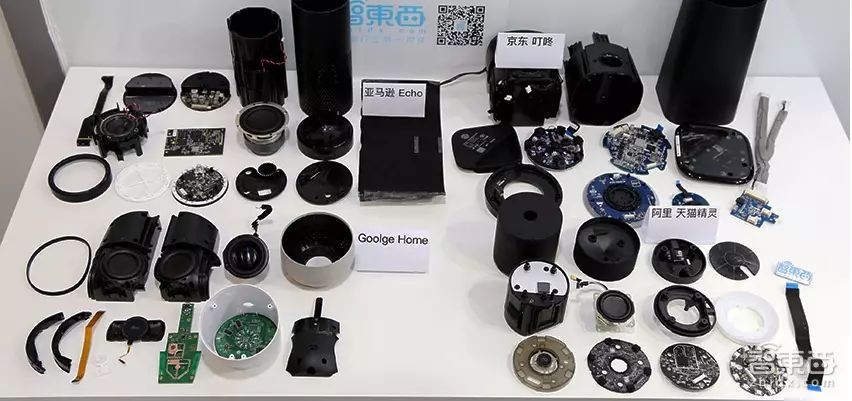
Zhidx | Yu Yang
Last week, we went to great lengths to deeply experience five major smart speakers, pitting them against each other in various aspects and testing their intelligence. But we weren’t done yet! We made a surprising decision to disassemble the speakers! Attached is the experience article (after testing five popular smart speakers, we genuinely worry about their intelligence!).
We aggressively disassembled four major smart speakers, stripping off their “clothes” to expose their “bodies” and see what designs and components they use, and how beautiful their “inner beauty” really is! Let’s start with some pictures!
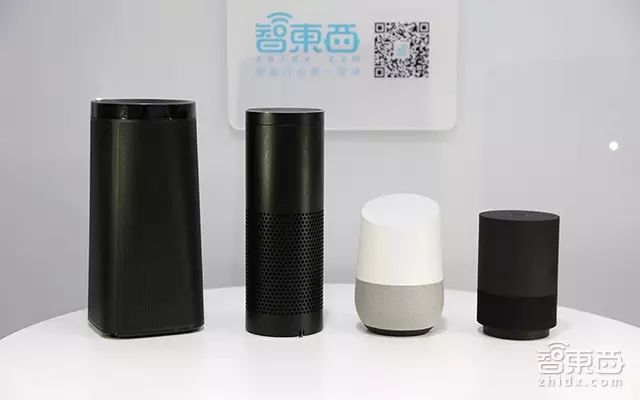
(From left to right: DingDong Speaker A1, Amazon Echo, Google Home, Tmall Genie X1)
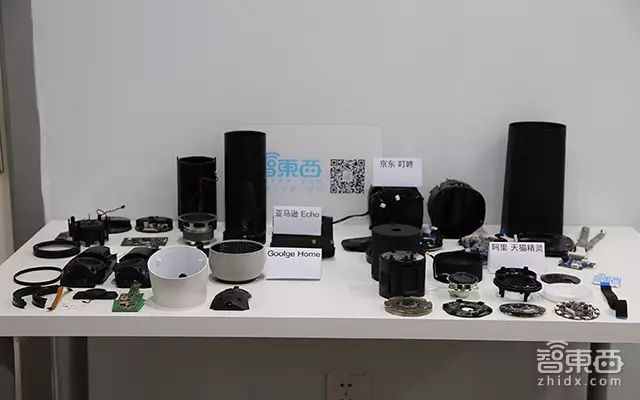
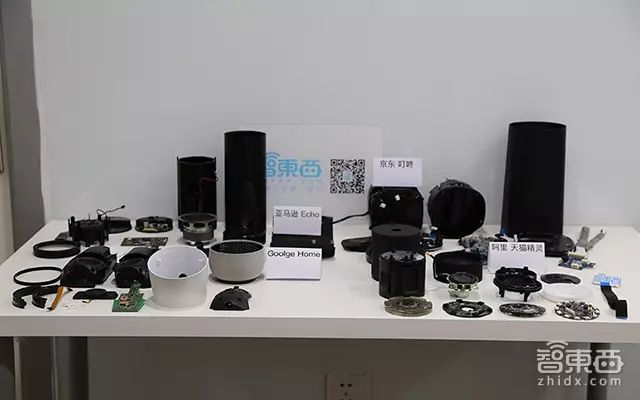
But disassembly alone is not enough! Zhidx specially invited Fu Qiang, founder of Xiansheng Huitong, to provide professional insights for this speaker disassembly. Fu Qiang was a researcher at the Institute of Acoustics, Chinese Academy of Sciences, with over 20 years of rich experience in voice signal processing, and companies like Baidu, Tencent, Lenovo, and Xiaomi are his partners or clients.
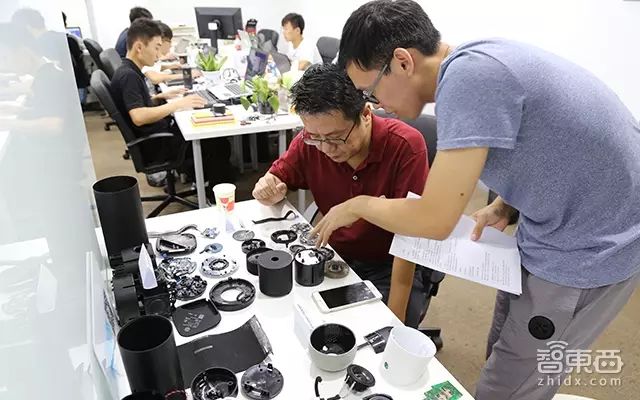
(The person in red in the picture is Fu Qiang)
After disassembling the speakers, we carefully analyzed the microphone array, main control chip, and body structure design, revealing a side of smart speakers that is rarely seen. This article is enough to understand smart speakers. Let’s take a look at the world behind smart speakers, who is following the trend, who is creating art, and what kind of evolution process the industry chain has witnessed.
1. Disassembling Four Major Smart Speakers to See Their “Inner Beauty”

The Amazon Echo was born in August 2014, and has experienced three years so far, making it the big brother; the DingDong Speaker A1 was born in August 2015, and is now two years old; Google Home was born in May 2016, and is now one year and three months; while the Tmall Genie X1 was born in July 2017, and has just turned one month old. Let’s take a look at their specific “true forms”:
1. Tmall Genie X1
We decided to start with the youngest and smallest Tmall Genie among the four speakers, kicking off the disassembly project.
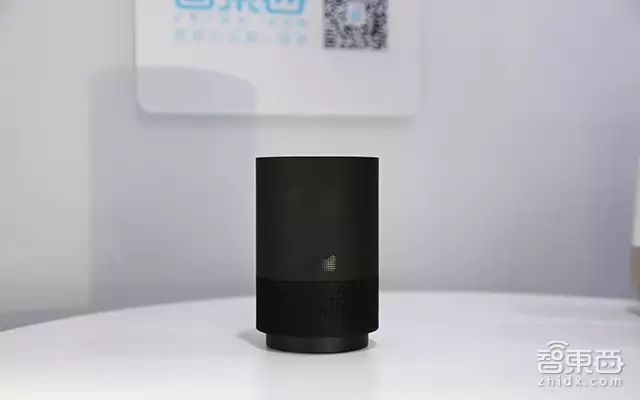
Disassembling the Tmall Genie starts from the bottom, tearing off the rubber pad on the bottom and removing three screws, which allows you to lift the base and see the white ring light guide plate and lamp control circuit board.
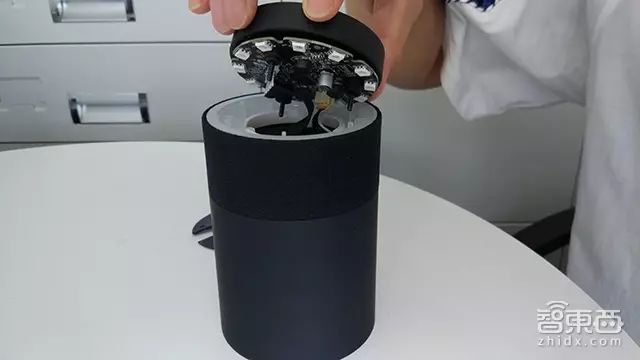
Yes, the white part around the circuit board is 12 LED lights. The front of the base circuit board has a Texas Instruments digital audio power amplifier model TAS5751M, and there is also a lamp control chip S0903 on the back.
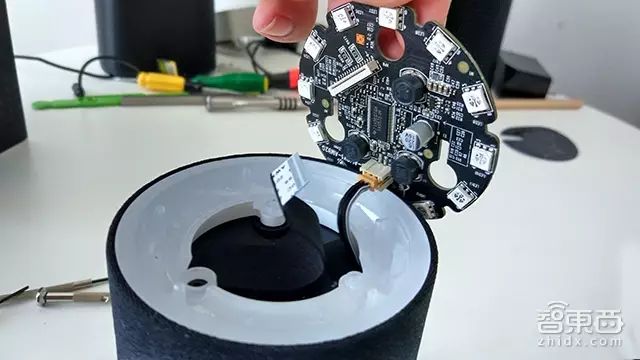
Continuing to disassemble, the next component is a conical radiator for more uniform sound diffusion, along with a dense mesh surrounding it.
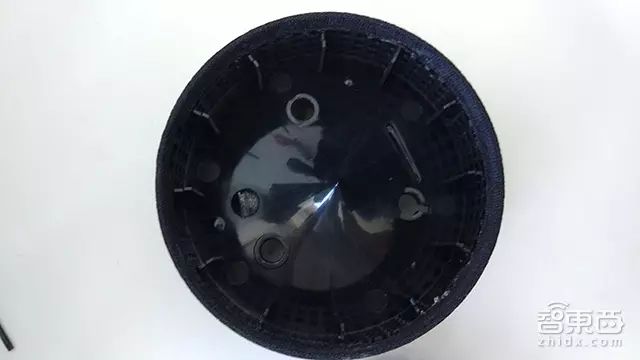
Next is the sound unit of the Tmall Genie: a full-frequency speaker, only one! It shows its power as 5W. Therefore, compared to other speakers, despite the Tmall Genie being small and cute, it sacrifices sound quality to some extent.
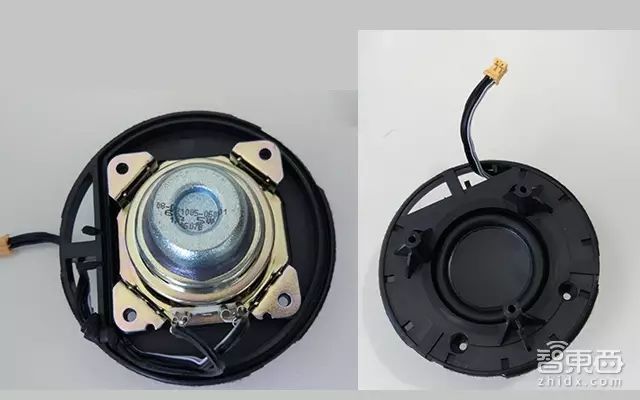
After removing the speaker, removing four screws inside the inner cylinder allows you to separate the outer shell and inner cylinder of the Tmall Genie. One side of the inner cylinder has a diaphragm that enhances the speaker’s bass effect through vibration.
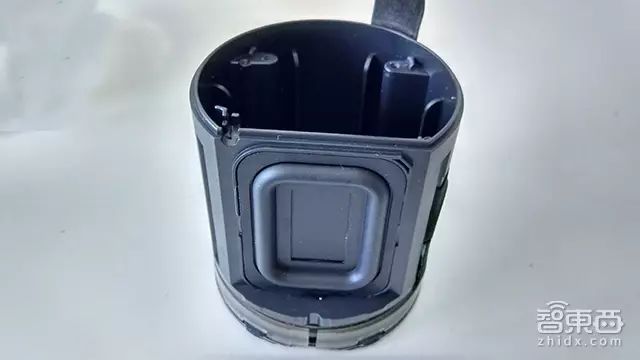
Flipping the inner cylinder reveals the mute button on the top of the Tmall Genie, and the top contains the most important parts of the speaker, the main control circuit board and the microphone array board!
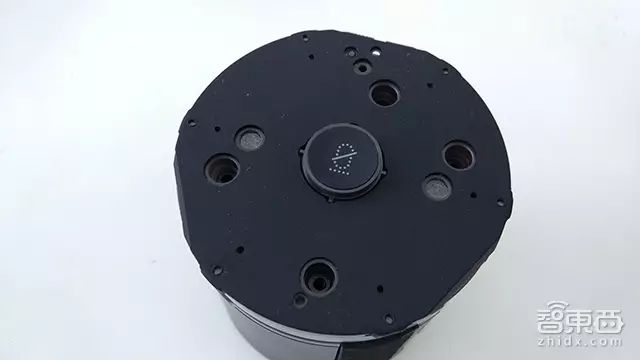
The microphone array board is located above the main board, connected via a ribbon cable and a separate socket, with a black and gray light guide plastic board in between. The microphone array board is connected to the top with double-sided tape, and when carefully disassembled, it looks like this! Six microphones are arranged in a ring around the edge of the panel, covered with black rubber.
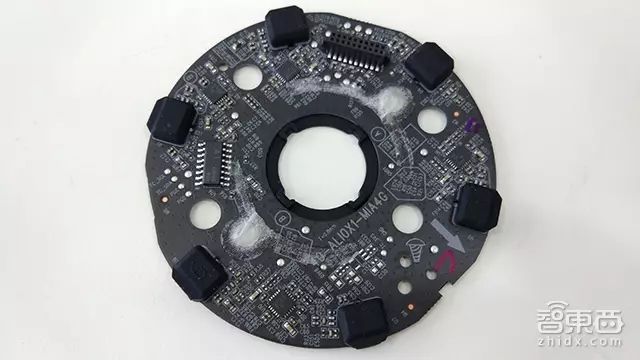
This microphone array is provided by SIBICHI, while the digital microphones come from Micron. There are also four Texas Instruments TLV320ADC3101 low-power stereo ADCs (analog-to-digital converters) on this circuit board. Additionally, there is an A1semi AS9050D touch controller.
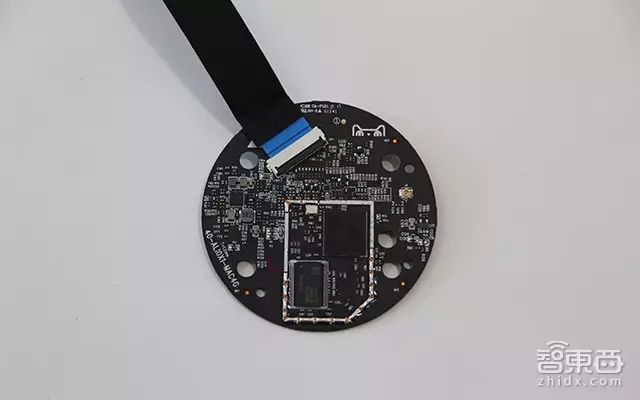
(Front of the main control circuit board)
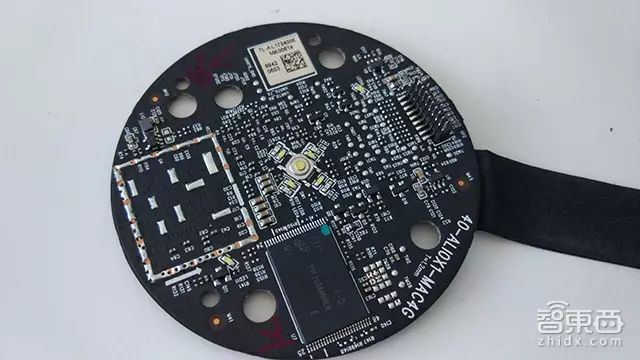
(Back of the main control circuit board)
On the front of the main control panel, the main control chip of the Tmall Genie is the MTK (MediaTek) MT8516 smart voice chip, which is also a chip recently developed by MTK specifically for voice devices. There is also a heat sink under the main control chip.
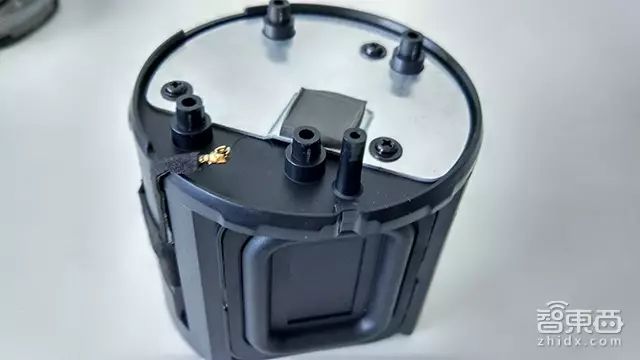
Additionally, the Tmall Genie also uses Samsung RAM, model K4B2G1646F, 2Gb (128M x 16); Micron flash storage, model 29F2G08ABAE, with a storage capacity of 2G (256M x 8), etc. Interestingly, the main control panel also has the Tmall logo.
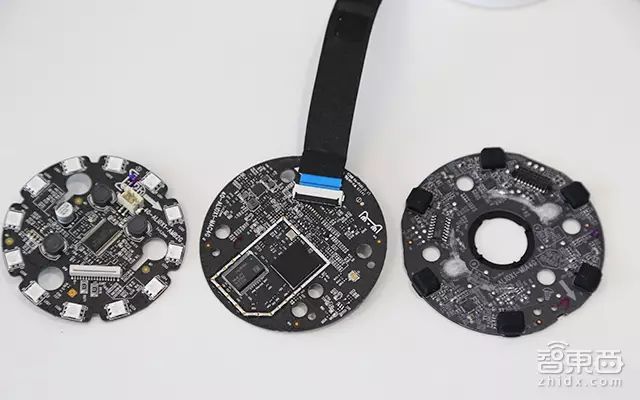
(Bottom plate, central control panel, microphone array board of Tmall Genie)
Overall, the disassembly of the Tmall Genie is relatively easy, with fewer components, a simpler design structure, and higher integration. However, its single full-frequency sound unit and acoustic resonance structure sacrifice sound quality to some extent. Here’s the full picture!
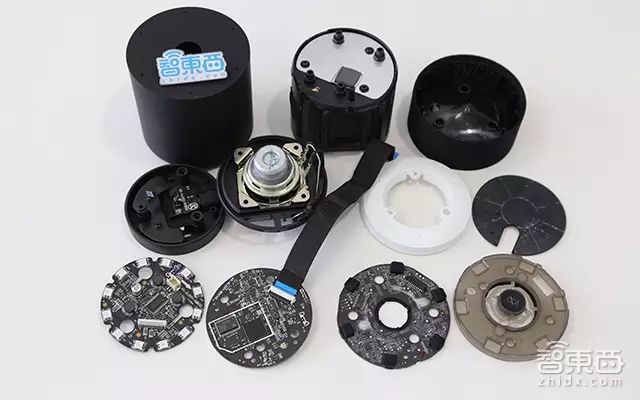
2. DingDong Smart Speaker A1
The DingDong Smart Speaker is the largest among these four speakers; what’s inside? Let’s start disassembling from the bottom!
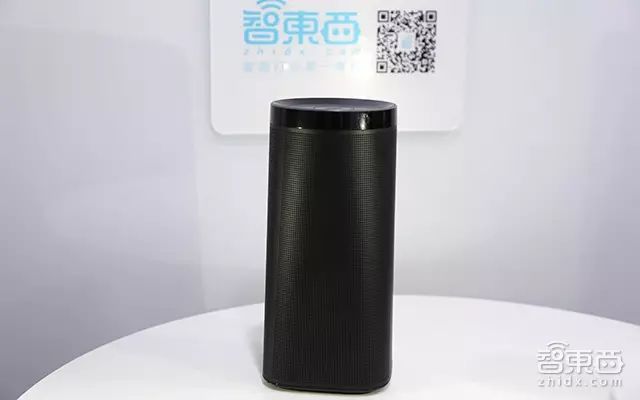
Before disassembly, it looked like this~
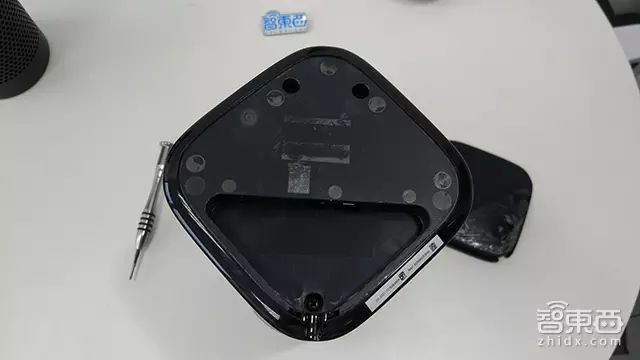
Tear off the rubber pad on the bottom and remove five screws to take off the back cover, revealing the bottom circuit board responsible for powering the device, with numerous ribbon cables connected, indicating that the DingDong speaker has a greater power.
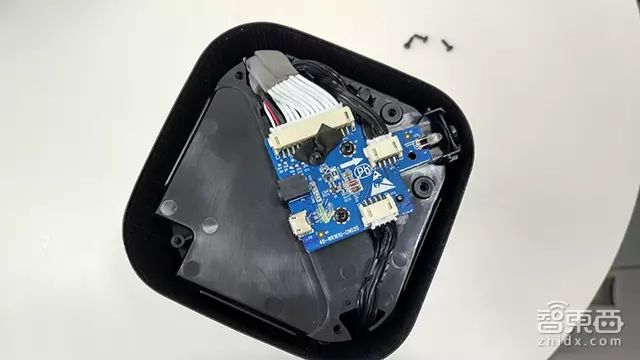
Then, pull down the metal mesh cover to see that the top is connected to the body with screws. Remove the surrounding four screws to separate the top cover.
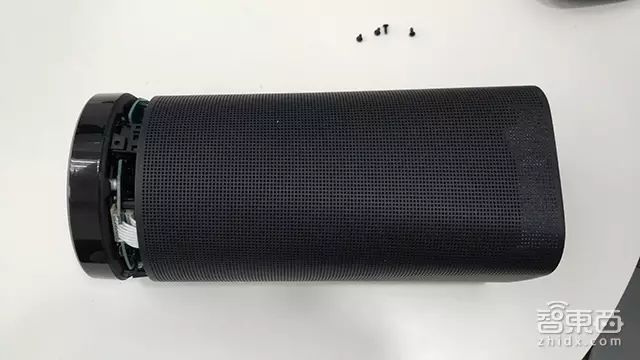
You can also strip off the mesh cover, revealing the large body of the DingDong speaker. The body can be divided into five parts from top to bottom, with a structure much more complex than that of the Tmall Genie, consisting of the main control circuit board, microphone array board, phase-inverted tube, one low-frequency speaker, and four full-frequency units.
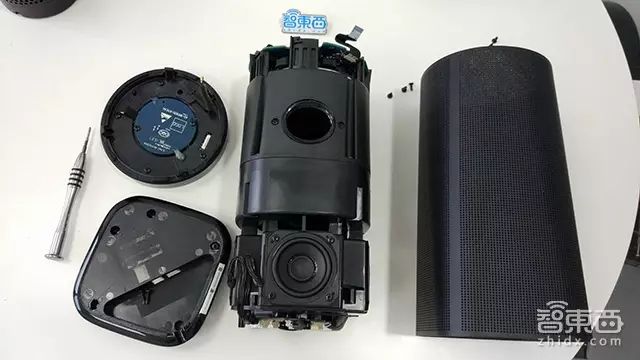
In the top cover, the first thing you see is a small round circuit board with a touch switch on the back, which has no other functions.
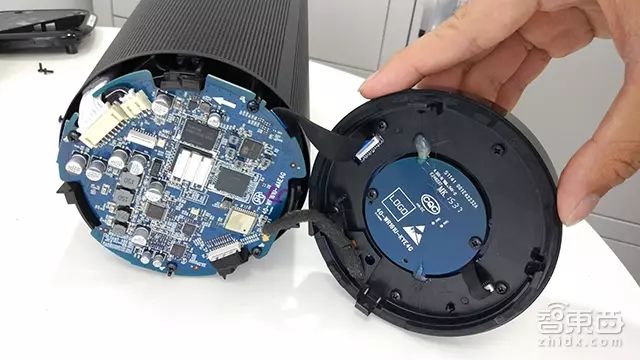
Continuing to disassemble the inner shell reveals the DingDong speaker’s lamp control circuit board, which is tightly connected to the top cover with double-sided tape. This circuit board has 21 LED lights and three chips, two Q1804s and one 4014, used for controlling lights and touch sensing.
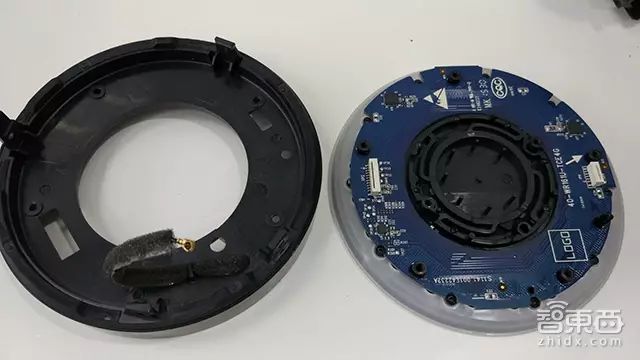
Back to the smart speaker body, the top is the main control panel, densely packed with components. A heat sink is also added to the main control chip, although it covers the chip, we confirmed with Fu Qiang that it uses the Allwinner Technology R16 chip.
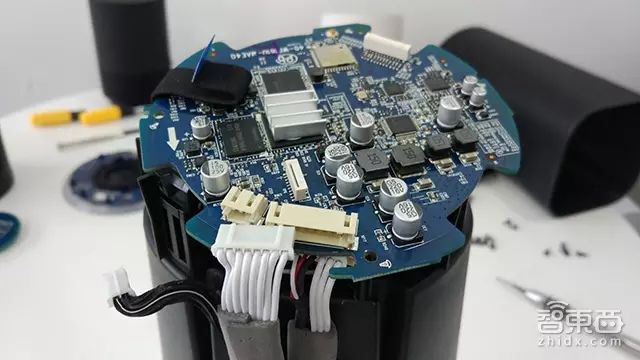
(Main control circuit board)
Moreover, the main chips include the Texas Instruments TAS5731M digital amplifier chip, supporting 2.1 mode, the CX20810-11Z audio ADC chip from CMedia, specifically for long-distance voice, Toshiba’s 4Gb eMMC chip, model THGBMBG5D1KBAIL, equivalent to the DingDong speaker’s hard disk; Samsung’s 4Gb RAM chip, model K4B4G1646Q-HYK0; and AXP223 power management chip from AXP Technology, as well as the AP6210 WiFi and Bluetooth combo chip from ZTE, etc.
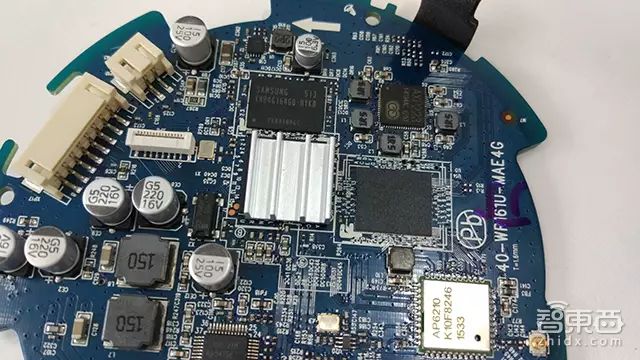
(Partial view of the main control board)
The microphone array board is located under the main board, with an impressive appearance, using iFLYTEK’s 7+1 microphone array, provided by Haon Acoustic ECM microphones, which have a high signal-to-noise ratio. The microphone array is a major feature, not located at the top of the speaker but in the middle upper section, with the microphones resting on silicone and covered by silicone, presenting an outward tilt. This design allows for sufficient shock absorption and is conducive to external sound pickup.
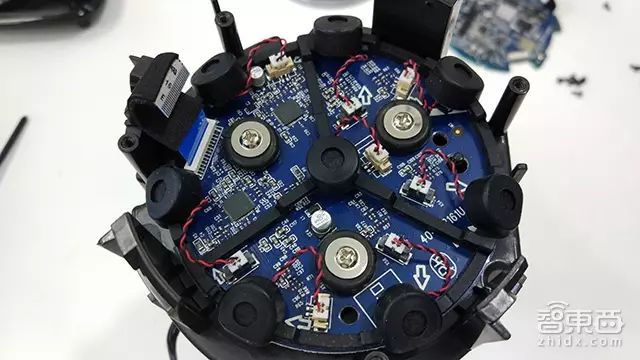
This circuit board also carries two CMedia CX20810-11Z audio chips, used for processing audio signals from eight microphones.
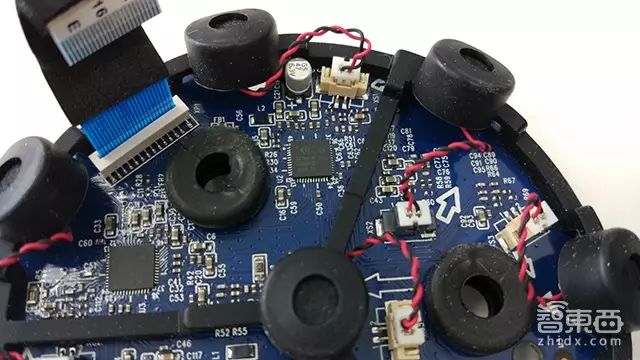
The DingDong speaker’s sound unit is the largest, using a combination of four full-frequency units and one low-frequency sound unit, along with a U-shaped phase-inverted tube. The four full-frequency units are placed in four directions because the sound unit is directional, allowing for even sound transmission and enhancing overall sound quality. The combination of the low-frequency unit and the phase-inverted tube also enhances the bass effect; it seems that the DingDong speaker has indeed put in considerable effort regarding sound quality.
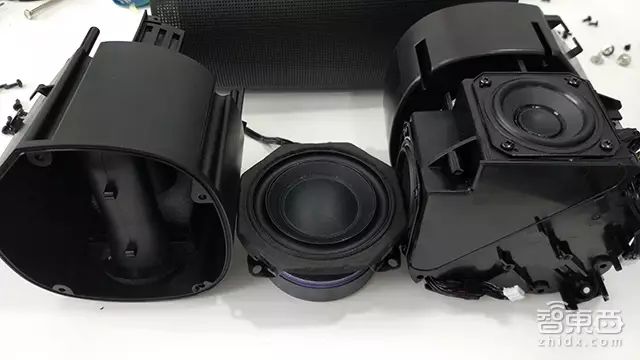
Overall, the DingDong speaker has a complex structure, making disassembly more challenging, being the largest in size and containing the most components. However, its microphone array is uniquely designed and places great emphasis on sound quality. Without further ado, here are the pictures!
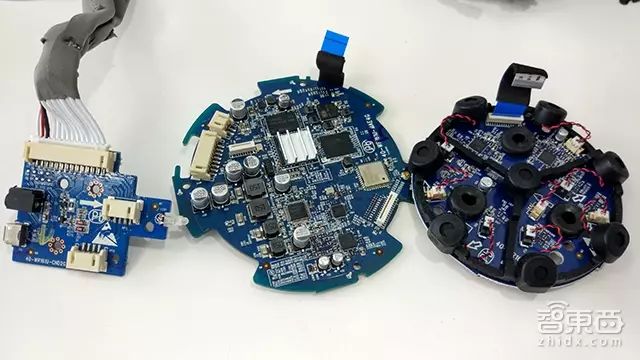
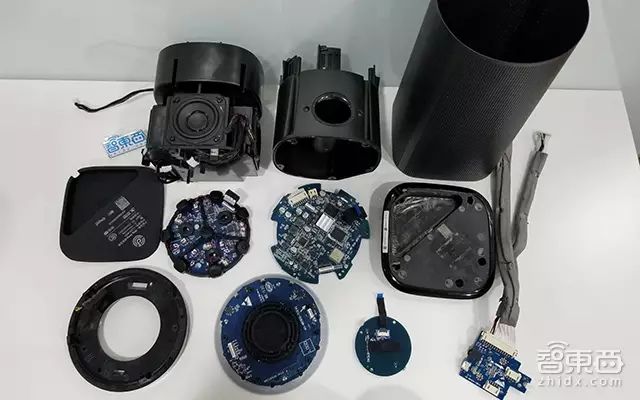
3. Google Home
As we move to foreign speakers, we even need to change tools. Disassembling Google Home mainly requires T6 and T8 screwdrivers. Google Home is relatively small; what is its structure like?

Before disassembly, it looked so elegant that I couldn’t bear to do it~
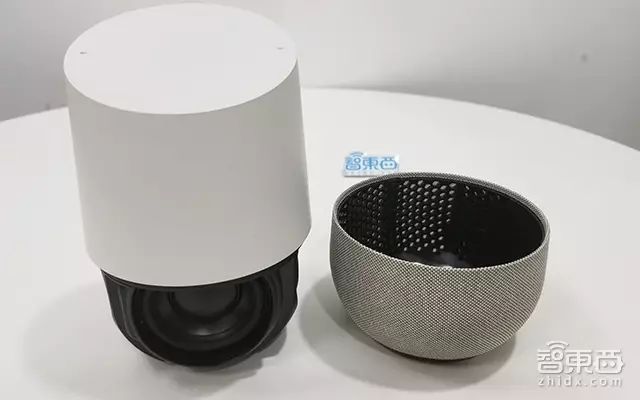
The gray mesh cover on the bottom of Google Home can be pulled off directly, revealing the black body and three conical paper cones inside. Removing the upper ring screws allows you to take off the white top shell, revealing a ribbon cable connecting the main control circuit board and the top microphone array board.
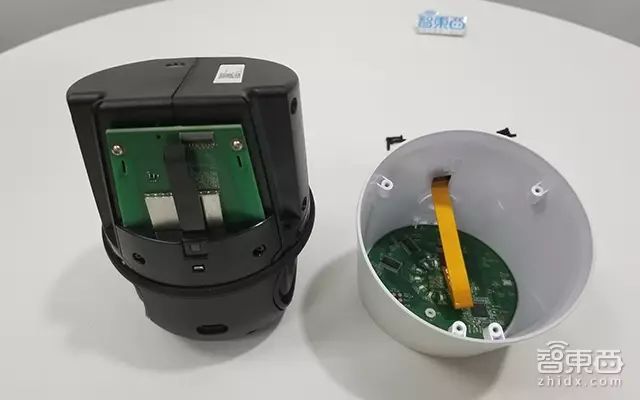
The top contains the microphone array board. Google uses a two-microphone linear microphone array, placed on the left and right sides of the panel. Although Google Home only has two microphones, Fu Qiang explained that within three meters, its pickup effect is even better than that of the Amazon Echo.
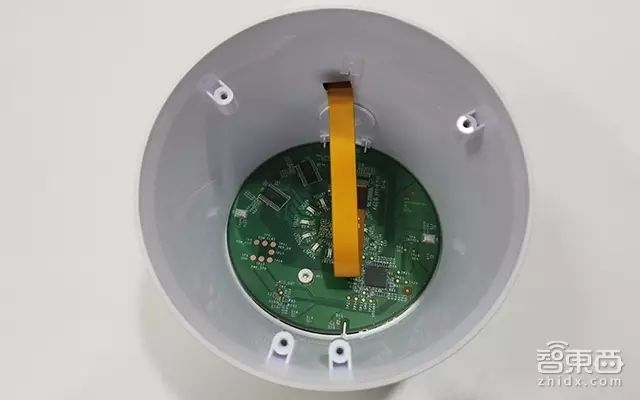
Google has taken a different path from the other three, not focusing on the number of microphones, but rather using its unique algorithms and deep learning technology. Additionally, there are 12 LED lights in the middle of the panel, equipped with an Atmel SAM D21 microcontroller and two NXP LED lighting driver chips.
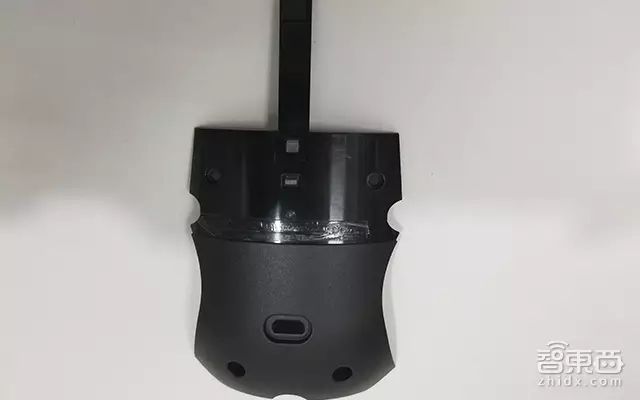
The body of Google Home is surrounded by a collar-like “waist belt” that can be easily removed. Unscrewing the screws around the main board allows you to take off the outer shell and see the main board. The black shell covering the main board looks surprisingly like a guitar, doesn’t it?
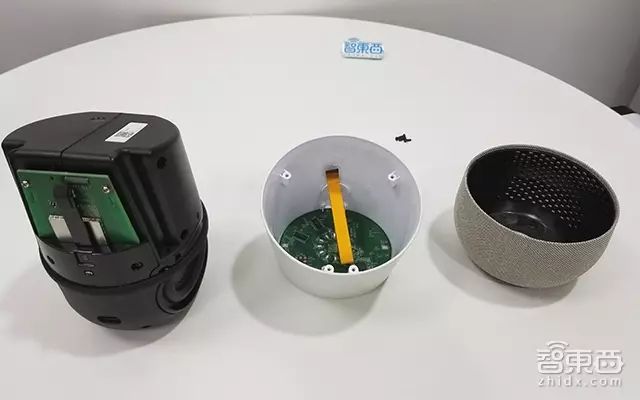
Following closely is the main board, surrounded by components, doesn’t it look even more like a guitar? Removing the five screws on the panel allows you to take off the main board. There are three important chips on the main board, all covered with shielding and silicone grease, which protects the components inside the shield and also shields electromagnetic interference.
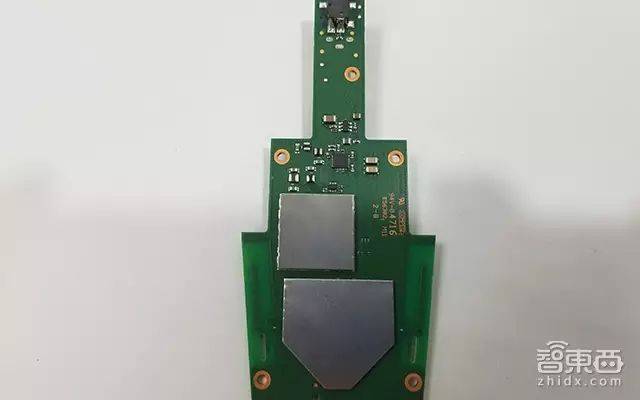
When prying open the shielding, you can vaguely see that it uses a Marvell main control chip, Toshiba’s 4Gb flash chip, Texas Instruments’ TAS5720 digital amplifier chip, Samsung’s 4Gb memory chip, and Marvell’s integrated WiFi, Bluetooth, and NFC chip, etc.
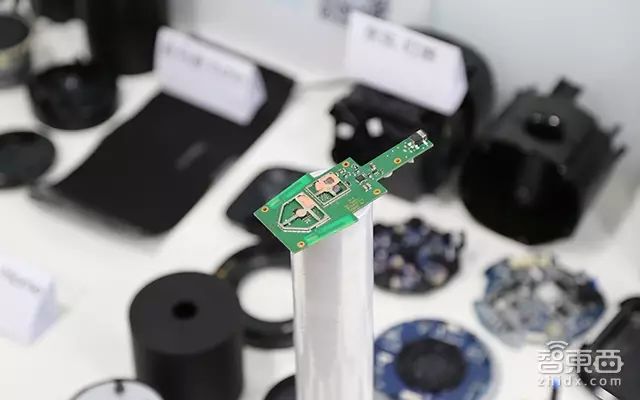
Another important part is the sound unit of Google Home. Simply removing a few screws can split the sound unit into three parts. At first glance, it might seem like it has three sound units, but in reality, it only has one full-frequency sound unit, plus two resonant membranes, which can create a stereo effect, reduce the directivity of one speaker’s sound, and enhance the bass effect, compensating for the shortcomings of a single sound unit.
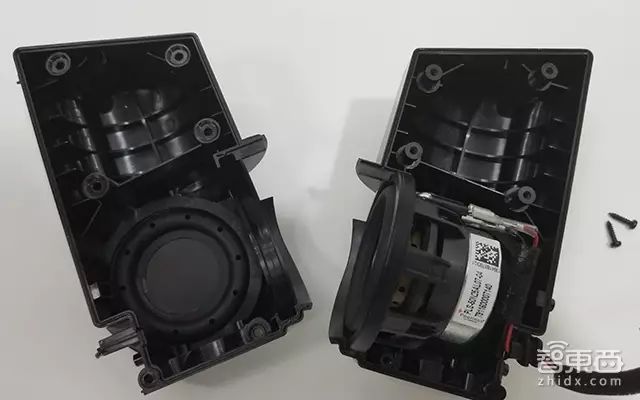
Overall, Google Home features a simple and clever design, with only two circuit boards, high integration, and relatively simple hardware processing capabilities. However, compared to the Tmall Genie, its acoustic cavity design is more clever and yields better results. Let’s continue with the family photo!
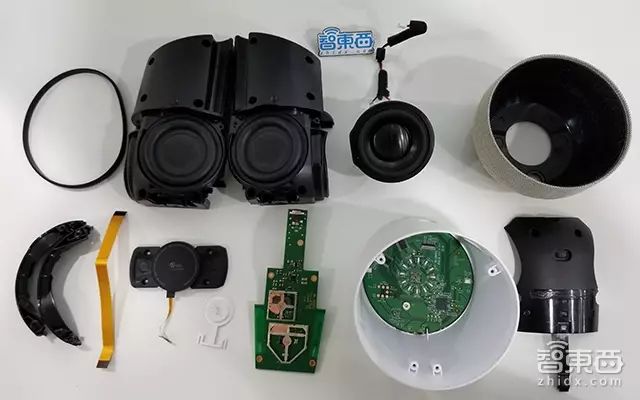
4. Amazon Echo
Finally, we arrive at the Amazon Echo, the big brother among smart speakers, which is also regarded as a classic work in the smart speaker realm. What secrets lie beneath its tall stature? So, with great anticipation, let’s take a look!
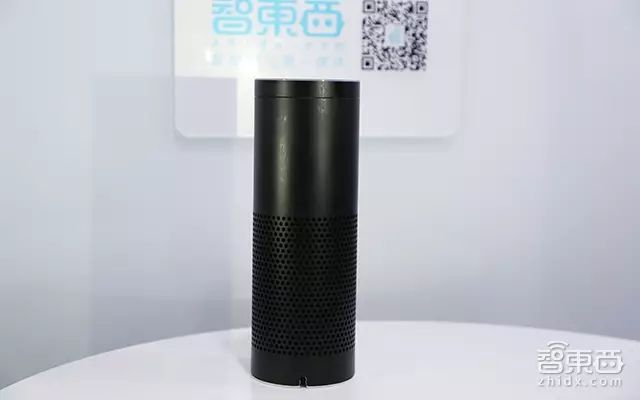
Before disassembly, it looked like this~
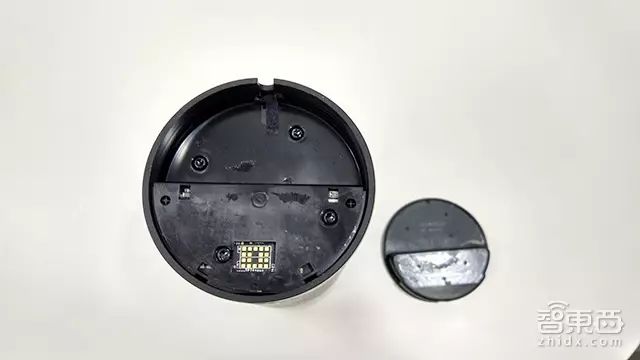
The disassembly opening of the Echo is also at the bottom. Tear off the rubber pad and use a T10 screwdriver to remove four screws. Interestingly, the black screws of the Echo are the longest among the four speakers. After lifting the back cover and removing the ribbon cable, you can see a semi-circular power panel, with three Texas Instruments (TI) chips on both sides: the TPS53311 power chip, TLV320DAC3203 stereo decoder, and TPA3110D2 stereo amplifier.
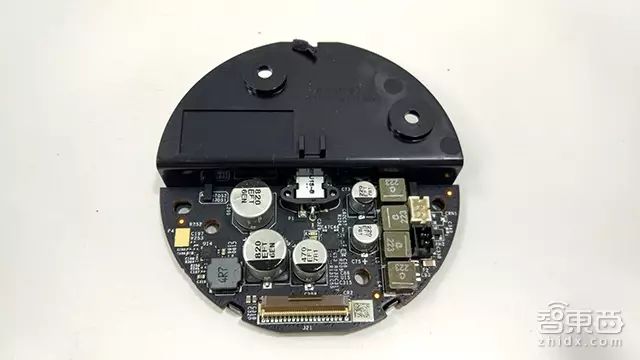
Next is the conical radiator, which works similarly to spread sound in all directions.
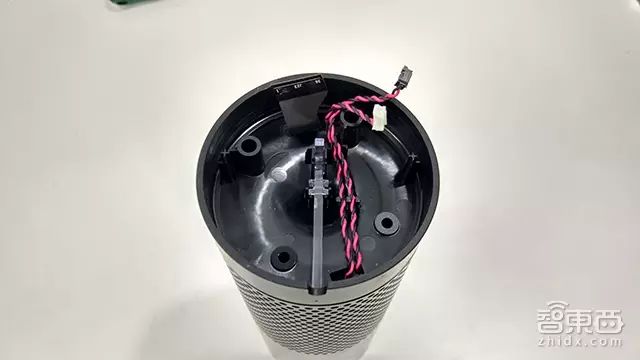
Removing the radiator reveals the mesh cover. However, it was found that the Echo also has a layer of sound-absorbing cotton, which reduces body vibrations and provides a certain degree of noise reduction.
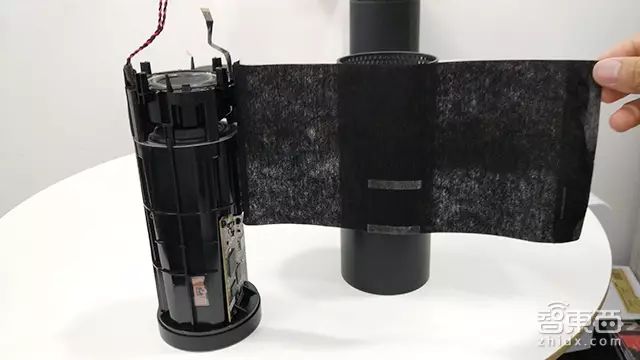
Carefully removing the sound-absorbing cotton reveals the true form of the body. The entire body resembles a piece of art, designed in four sections: a high-frequency unit, a low-frequency unit, and a U-shaped phase-inverted tube, with the microphone array located at the top of the speaker, while the main control circuit board is situated on the side of the body.
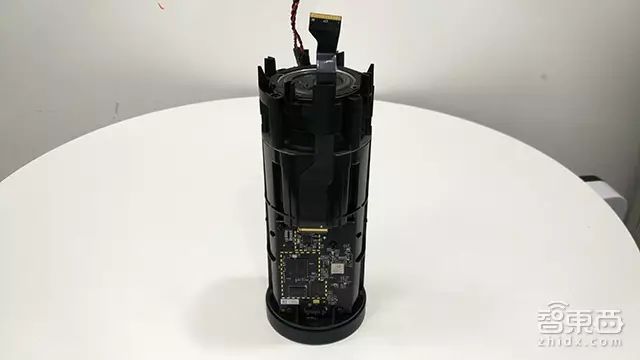
Next comes the enjoyable disassembly process. By unscrewing the screws around the high-frequency unit, you can discover the Echo’s layered structure, where the high-frequency unit, low-frequency unit, and phase-inverted tube are interlocked. Among them, the high-frequency unit is a 2-inch high-frequency speaker, while the low-frequency unit is a 2.5-inch low-frequency unit. Moreover, the tall stature of the Echo shows that Amazon has made sacrifices for the speaker’s sound quality, achieving better sound effects through the collaboration of the three units.
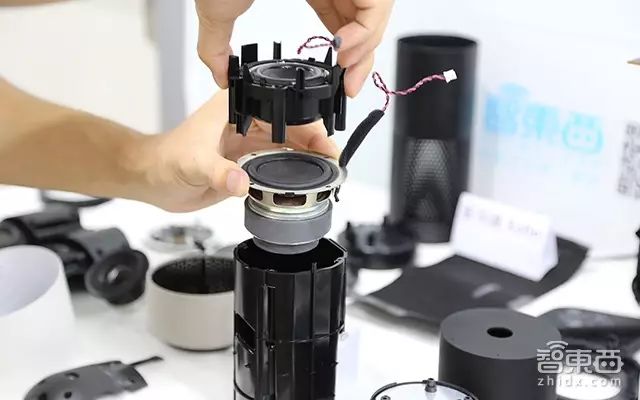
Below is the main board, a finely crafted square panel. Its main control chip is Texas Instruments’ digital media processor, model DM3725CUS100. According to Fu Qiang, this chip is quite expensive, close to $10, showing that Amazon has spared no expense in developing the Echo.
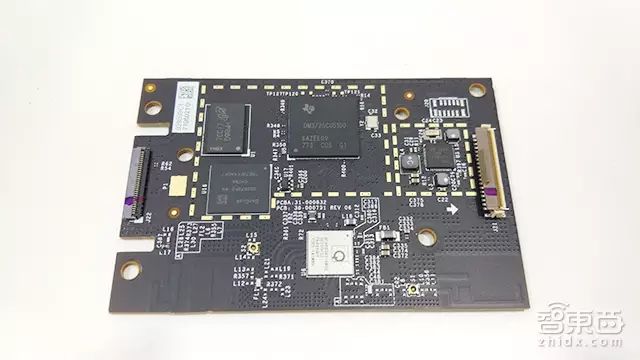
Additionally, the main board also uses Samsung 2Gb memory, SanDisk 4GB flash storage, Qualcomm’s integrated WiFi and Bluetooth module, and Texas Instruments’ integrated power management chip.
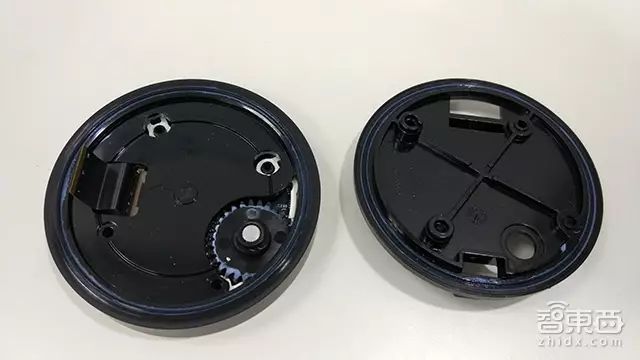
Next, pry off the body, leaving the top of the Echo speaker, mainly consisting of the microphone array board. By removing the screws on the plastic shell, you can see the gear structure of the Echo. Remember how the circular light ring is used to adjust the volume? Yes, it is driven by this gear structure!
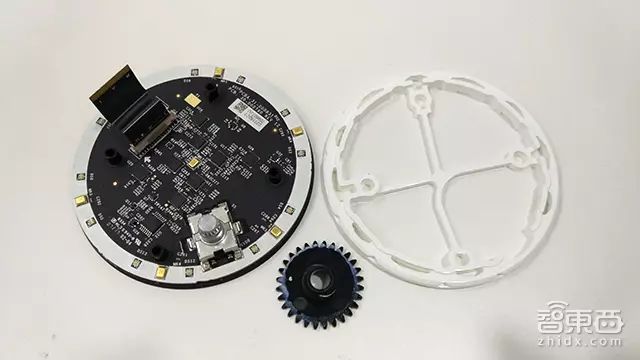
Layer by layer, removing the plastic shell and brackets above the microphone array board, we finally see its true form. The first thing that catches the eye is Echo’s 6+1 microphone array, with six microphones located around the edge of the circular panel and one in the center. This MEMS microphone is provided by Knowles, and the microphone array is managed by the Echo team itself.
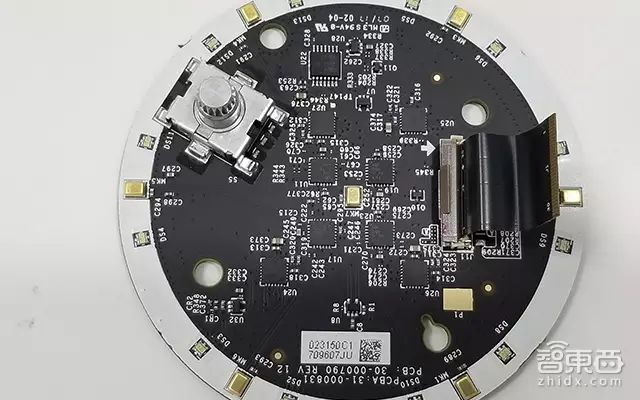
The four chips in the panel are Texas Instruments’ ADC (analog-to-digital converter), while four other Texas Instruments LP55231 driver chips surround these four chips.
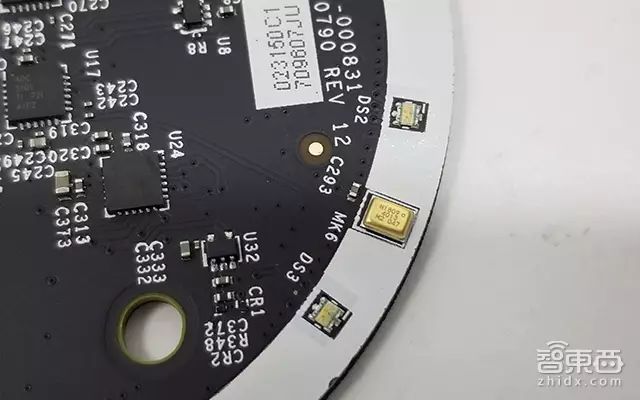
It must be said that Amazon has indeed spent a lot of money on the Echo! The overall disassembly process is very smooth, with a refined structure, gear structure, and a design that considers sound quality. Looking at the beautiful circuit board and expensive chips, one is amazed at Amazon’s unrestrained investment in innovation, as four years of refinement have made it a classic.
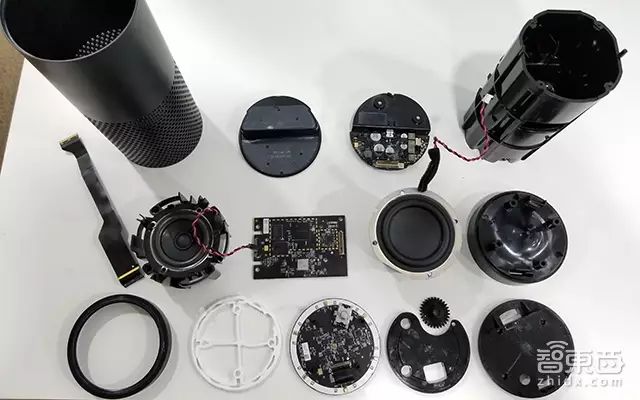
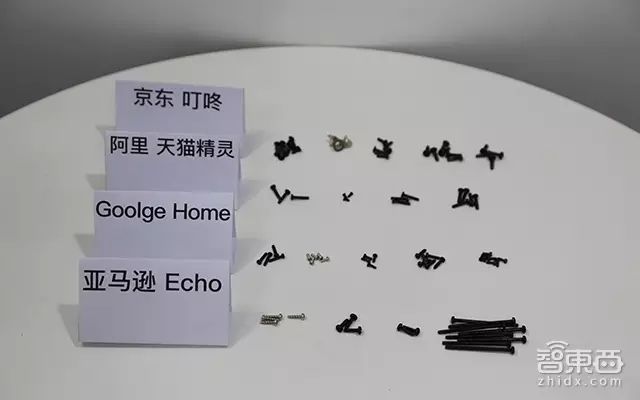
2. Hardware Comparison of Four Major Smart Speakers

After watching the exciting disassembly process, did you feel amazed? Don’t worry, there’s even more exciting and in-depth hardware comparisons of the four smart speakers.
Next, we will delve deeper into the core chips, microphone arrays, sound units, cost situations, product designs, etc., of the four speakers.
1. Core Chips: Echo is the Strongest, DingDong Appears Weak
Here, we mainly compare two types of chips: main control chips and Codec (multimedia digital signal codec) chips, including ADC/DAC (analog-to-digital conversion/digital-to-analog conversion).
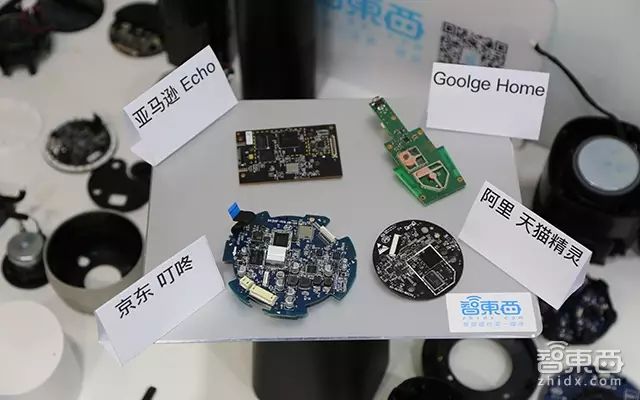
(Main control circuit boards of the four speakers)
In terms of main control chips, the Amazon Echo uses the TI (Texas Instruments) DM3725CUS100 chip, which is relatively expensive, close to $10, mainly for industrial-grade applications, such as military products. Although the main frequency is not high, its processing capability is strong and stable. Logically, a smart speaker does not require such a large processing capacity, and Amazon truly has deep pockets.
On the other hand, Google Home uses the Marvell (Marvel) 88DE3006 chip, which is also an industrial-grade chip commonly used in communications, but its price is not as high as that of the Echo. Additionally, this chip is dual-core, indicating that Google Home does not have much computational power in hardware, as most computations occur in the cloud, simplifying many aspects and eliminating the need for a Codec; the microphone array can connect directly to the main control.
The Tmall Genie employs the MTK MT8516 voice-specific chip, which supports an 8-channel microphone array interface. This chip was recently launched by MTK and should be better in its generation, with higher stability and cost-effectiveness, priced around $3.
The DingDong speaker A1 uses the Allwinner Technology R16 chip, which has average craftsmanship, generates significant heat, and is relatively weak in performance compared to others, priced around $3 to $4. However, since the DingDong speaker was launched in 2015, it was one of the earliest in China, and the industry was unprepared; the Allwinner R16 is not a dedicated chip, which somewhat limits the DingDong speaker’s options.
In terms of Codec chips, the pickup section, signal-to-noise ratio, and multi-channel synchronization all require processing via Codec chips. Both Echo and Tmall Genie use Texas Instruments’ ADC chips, but the 92dB signal-to-noise ratio is not particularly high. In contrast, the DingDong speaker uses CMedia’s audio chip, which specializes in Codec chips, providing a higher signal-to-noise ratio and better performance.
2. Microphone Arrays: Two Divergent Paths
The microphone array is a crucial component of smart speakers, involving pickup, noise reduction, echo cancellation, etc. A comparison shows that the Amazon Echo, DingDong speaker, and Tmall Genie follow a similar technical route, using 6 or 7 microphones in a circular array, while Google Home takes a unique approach, using a linear array with two microphones.
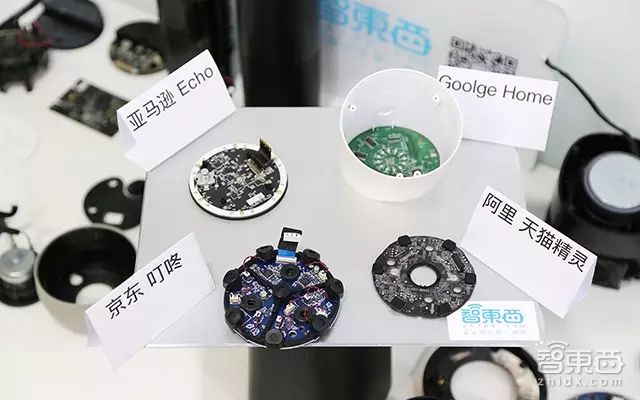
(Microphone arrays of the four speakers)
The Echo’s microphone array comes from its internal team, utilizing MEMS microphones from Knowles, with individual costs under $1, leading to a total cost of about $20 to $30. According to Fu Qiang, the Echo team spent four years developing this speaker, and its microphone array’s application in speakers was the first in the industry, marking a milestone in the consumer-grade application of microphone arrays.
Although the DingDong A1 follows the Echo’s technical pattern, adopting a 7+1 microphone array, the technology comes from iFLYTEK, while its structure has made breakthroughs. The microphone arrays of Amazon Echo, Google Home, and Tmall Genie are all located at the top of the speakers, while the DingDong speaker’s design avoids the top, placing it below the main board with a hollow structure. The microphones tilt outward, facilitating sound pickup.
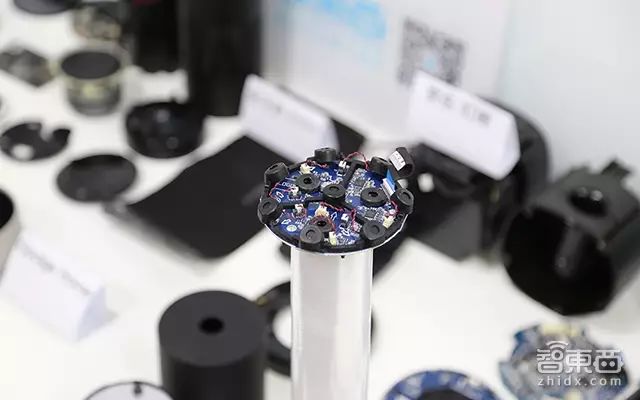
(DingDong speaker’s microphone array)
Its microphones rest on rubber, with the central microphone utilizing a suspended design, remaining on the same level as the other microphones, enhancing shock absorption. Considering that the DingDong speaker’s sound unit is relatively large, which can create significant resonance, this design helps buffer vibrations, reduce noise, and improve pickup performance. This microphone array’s structural design is indeed unique. Additionally, unlike the others, it uses ECM microphones provided by Haon Acoustic, with individual costs around $1.
The Tmall Genie employs a 6-microphone array from SIBICHI, with MEMS microphones sourced from Micron, costing around $2 to $3 each. SIBICHI has been promoting its microphone solutions for speakers, with relatively competitive prices.
In contrast, Google Home uses a linear dual-microphone array, taking a different path. Its microphones come from InvenSense, and although it has only two, they are relatively expensive. Its algorithm comes from Google itself; despite having only two microphones, its sensitivity remains high. Fu Qiang also shared a deep test, indicating that compared to the Echo, Google Home performs better in comprehensive capabilities (pickup, signal-to-noise ratio, noise resistance, echo resistance) within three meters. The microphone array’s algorithm is quite unique, combining deep learning with beamforming techniques.
3. Sound Units: Echo and DingDong are Superior
Although smart speakers are known for their “smart” features, the current smart speakers still need to consider sound quality, as it is a core aspect. Sound quality is influenced by both Codec chips and sound units.
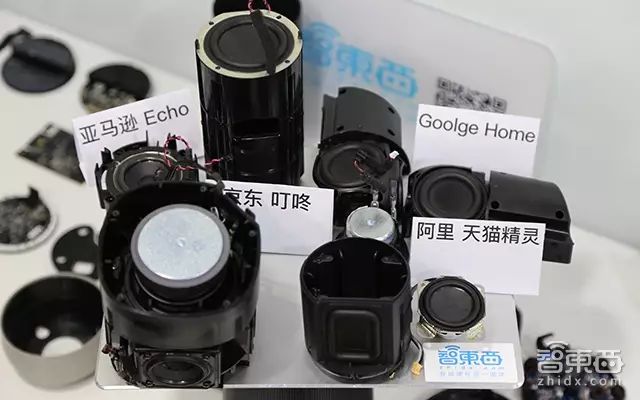
(Sound units of the four speakers)
The Amazon Echo utilizes a high-frequency unit, a low-frequency unit, and a phase-inverted tube design, ensuring high frequencies while also enhancing the bass effect. The reason why the Echo is a typical representative of smart speaker products and the big brother is not only because it was the first smart speaker, but also because it strikes a balance between intelligence, sound quality, size, and experience.
The DingDong speaker employs a structure of one low-frequency unit and phase-inverted tube, along with four full-frequency units, ensuring sound quality while adding to its bulkiness.
Google Home and Tmall Genie are slightly weaker in sound quality, using only one full-frequency sound unit, with resonant membranes to enhance some bass effects. From the design structure, Google Home’s two resonant membranes also create a stereo effect, making it relatively better than Tmall Genie.
4. Cost Situation: Most are Not Profitable
Currently, the classic version of the Amazon Echo is priced at $179.99 (around 1200 RMB), Google Home is priced at $129 (866 RMB), DingDong Speaker A1 is priced at 798 RMB, and Tmall Genie X1 is priced at 499 RMB.
It is understood that the Amazon Echo, Google Home, and Tmall Genie are all subsidized, while the DingDong speaker is not losing money but is also not making a profit. The prices of components can vary significantly based on procurement scale; we estimate the cost situation based on information from industry insiders and the supply chain, for reference only.
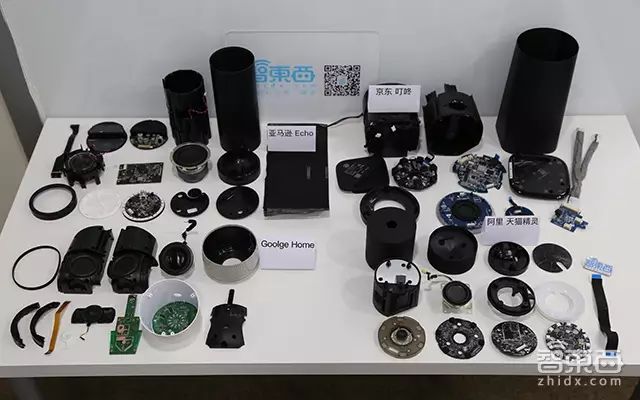
The R&D of Echo can be considered as cost-ineffective; for instance, using TI’s industrial-grade main control chip, which costs several times more than other chips, led to the Echo’s initial price being close to the cost price. Recently, although the Echo’s sales have surged, exceeding ten million units, it is also related to Amazon’s vigorous promotion and discount strategies. With increasing sales, it will gradually move towards profitability.
Based on a preliminary analysis of the BOM (Bill of Materials) for several products, the material cost of DingDong A1 should be around 300 RMB; just the Allwinner R16 board costs over 100 RMB now, not to mention a year ago. Roughly considering, the main board and microphone array board of the DingDong speaker are around 150 RMB, plus the sound unit, shell, and processing, the current material cost should be under 300 RMB. The Tmall Genie’s three boards are estimated to be around 150 RMB, with an overall material cost of about 200 RMB.
However, this is only the material cost of the product; if you add R&D investment and labor costs, the readers can judge for themselves~
Additionally, the Amazon Echo is manufactured by Foxconn, Google Home by Quanta (Taiwan), and both DingDong speaker and Tmall Genie are manufactured by Tongli Electronics.
5. Product Design: Two Routes
Each company’s product design has its own starting point, with Amazon Echo’s design being the most classic, DingDong speaker’s design being more complex and focused on sound quality, while Tmall Genie and Google Home’s designs are simpler and more compact.
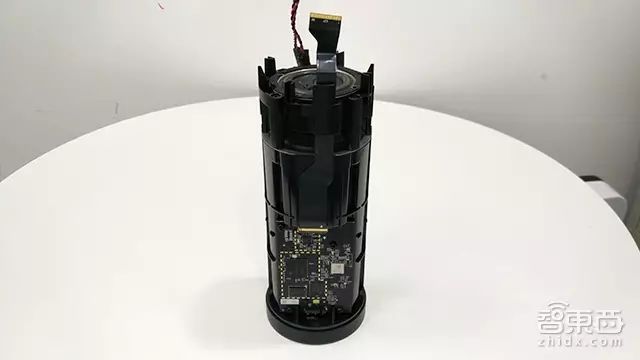
Echo’s design balances sound quality, size, and body structure, and is manufactured by Foxconn, which enhances its craftsmanship; the Echo’s body also resembles a piece of art. Its main control circuit board has a high level of integration, and the material of the substrate is also good.
Google Home’s design is very simple. It uses only two microphones, with only two channels, simplifying many aspects, and does not require a Codec; the microphone array connects directly to the main control, with minimal computational power in hardware, as most computations are handled in the cloud. Its linear microphone array structure and the use of deep learning algorithms are innovative.
The DingDong’s design structure is relatively complex. First, it uses the Allwinner R16 chip, which is not a dedicated chip, making the pickup process more complicated. This is also related to the DingDong speaker’s early launch, where the entire industry was unprepared, and the solutions were not mature. Additionally, its four full-frequency sound units plus one low-frequency sound unit lead to greater power consumption, which can be seen from its coarser wiring.
In contrast to the flexible board wiring designs of other companies, the DingDong speaker’s wiring is less aesthetically pleasing. Of course, flexible boards are more expensive, and they also have higher requirements for craftsmanship. Considering the DingDong’s power, using ordinary wiring is safer and cheaper.
The Tmall Genie, being a recent new product, undoubtedly has higher maturity in its solutions and hardware, with the MTK chip’s higher integration evident from its circuit board, body, and craftsmanship. The Tmall Genie represents a snapshot of the industry, reflecting the industry’s maturation.
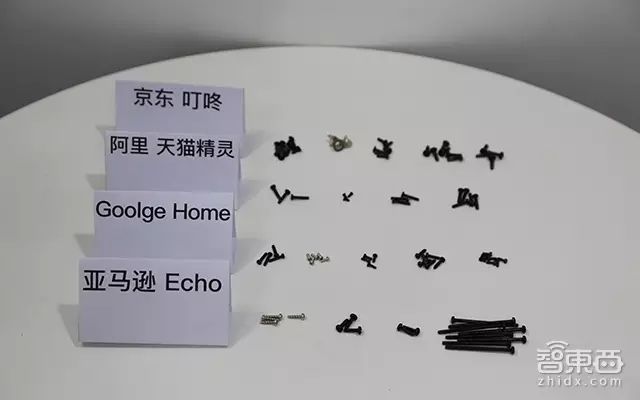
(Incomplete disassembly of screws from the four major speakers)
Interestingly, we found that the screws of each company also reflect their craftsmanship to some extent. In some ways, the fewer screws in a speaker, the higher the level of integrated industrial design, and the better the craftsmanship. Acoustic products emphasize tightness, and screws can create gaps that reduce this tightness. Overall, the Tmall Genie and Amazon Echo have fewer screws, while the DingDong speaker has more screws, with larger aperture differences, indicating slightly inferior craftsmanship.
3. The Evolution of Technology Behind Four Major Smart Speakers

More interestingly, we see the evolution of smart speakers through these four models: pioneering — following — differentiated innovation — maturation.
The Amazon Echo, DingDong Speaker A1, Google Home, and Tmall Genie X1 were released in 2014, 2015, 2016, and 2017, respectively.
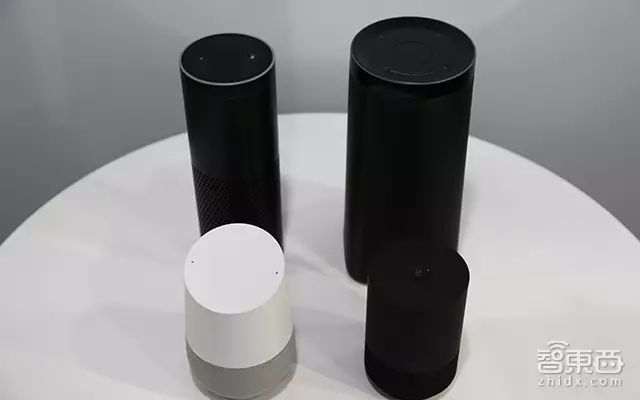
As the big brother of smart speakers, the Amazon Echo pioneered the smart speaker era, with Amazon’s substantial investment and four years of product refinement making the Echo’s design, intelligence, craftsmanship, and experience a classic in the industry.
Following closely, JD.com, which has been eager to benchmark against Amazon, could not sit idle and established Linglong Technology in collaboration with iFLYTEK, launching the DingDong smart speaker in August 2015. The DingDong speaker continues the technical route of Echo in overall design, adopting multi-channel circular microphone arrays and sound units.
However, the DingDong speaker also has some unique breakthroughs in its microphone array, avoiding MEMS microphones and placing the microphone array below the top of the speaker, using ECM microphones and a hollow suspension design.
Nonetheless, the DingDong speaker’s bulky body, the complexity brought by its main control chip, and its somewhat rough industrial design reflect the immaturity of the domestic smart speaker industry. The DingDong speaker is an early experimenter in the domestic market, playing an important role in driving the industry and cultivating the industry, and can be considered a case of imitative innovation.
Google Home takes a different path, leading a new direction by using a linear microphone array with two microphones and simplifying the body to achieve a compact design. Disassembling Google Home reveals that its structure is the simplest among the four speakers, using the least materials. By combining deep learning and beamforming, it simplifies hardware design by offloading computations to the cloud. In the evolution of smart speakers, Google Home is a disruptor and a differentiating innovator, forming a new development direction.
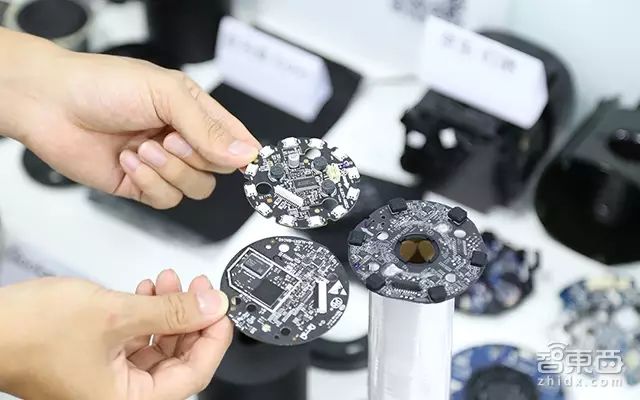
(Three circuit boards of Tmall Genie)
This year’s Tmall Genie, while not particularly groundbreaking in hardware, adopts Echo’s circular microphone array scheme and absorbs the simplicity of Google Home, representing more of a follow-up. However, its circuit board design, speaker structure design, and manufacturing craftsmanship reflect the basic maturity of the smart speaker industry chain.
From the Amazon Echo pioneering the smart speaker era to the DingDong speaker’s imitative innovation, to Google Home’s differentiated innovation, and finally to the Tmall Genie’s mature solutions, we witness the evolution of smart speakers over these four years.
Conclusion: The Flowing Heroes, Focus on Today

After weeks of preparation, Zhidx disassembled four major smart speakers, comparing core components and presenting rich information about the industry chain, while narrating the evolution of smart speakers within the industry. We also reached the following conclusive insights:
1. The smart speaker category has undergone four years of development, with rapid evolution in chips/modules, microphone arrays, and supporting industry chains, marking a process from non-existence to existence.
2. Amazon’s success is justified; the Echo played the role of a pioneer, while its team invested heavily in the product.
3. With the emergence of Tmall Genie, we find that as the industry chain matures, the barriers to entry for smart speakers are becoming lower, and the potential for cost reduction is increasing.
4. Hardware is just the foundation; how to maximize the performance of limited hardware tests the real strength of each smart speaker manufacturer. For instance, Google Home may not have superior technical specifications, but it excels in practical applications thanks to its powerful deep learning algorithms.
5. Any hardware product is a reflection of its price and the effort put into it.
As the industry chain matures, more and more smart speakers are entering our field of vision, with the Xiaomi smart speaker priced at an ultra-low 299 RMB reportedly set to launch a more affordable smart speaker product in its ecological chain. The barriers to smart speakers are getting lower, but the final sales figures remain uncertain.
As we conclude, we can’t help but reflect on the flowing heroes of the past and focus on the present. Who will become the trendsetter of the era, who will break through obstacles and explore new opportunities, and who will bring smart speakers into every household? Ultimately, it will be left to the market and users; Zhidx will continue to delve into smart speaker industry players and keep disassembling.
(Thanks to Fu Qiang, founder of Xiansheng Huitong, for supporting this smart speaker disassembly!)
Reply “Smart Speaker” on Zhidx’s WeChat public account to watch the on-site video of the Apple HomePod experience.

Further Reading
Click the image below to read directly
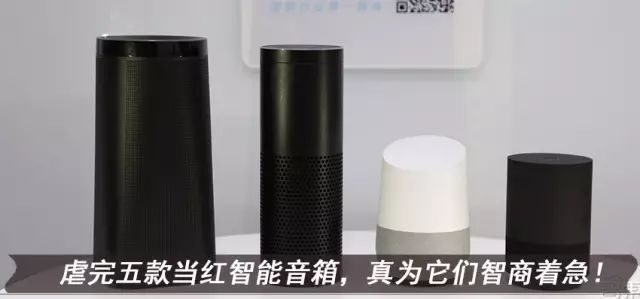
Past Reviews
Pioneers of Hardware Innovation (2017)
Sharing Economy
Hi Electric | Cloud Charging
Artificial Intelligence & Big Data
Xiansheng Huitong
Kangfuzi | Heterogeneous Intelligence | Medical Imaging Intelligence | Color Cloud AI | Shence Data
Bamboo Intelligent | Shenjian Technology | Iron Man Technology | Suddenly Cognition | Datuo Technology
VR/AR
VeeR | RealMax | ObEN | Sosi Technology
Automotive
Tian Tong Wei Shi | Auto X | Su Teng Ju Chuang | Vector.ai
Smart Traveler | WayRay | Youxia Automobile | EZZY | Kaiyun Automobile
Focus Feature
Sharing Economy
Truth About Shared Power Banks: Unbearably Bad
Shared Electric Bikes Making a Comeback
Out-of-Control Shared Bicycles
Corporate Observation
Li Yanhong’s 24 Guests: Leaving Baidu, Growing Wild
Travel Master Li Bin and His Secret Empire
Why Are Smart Delivery Cabinets in Trouble?
The Underground World of Smart Rearview Mirrors